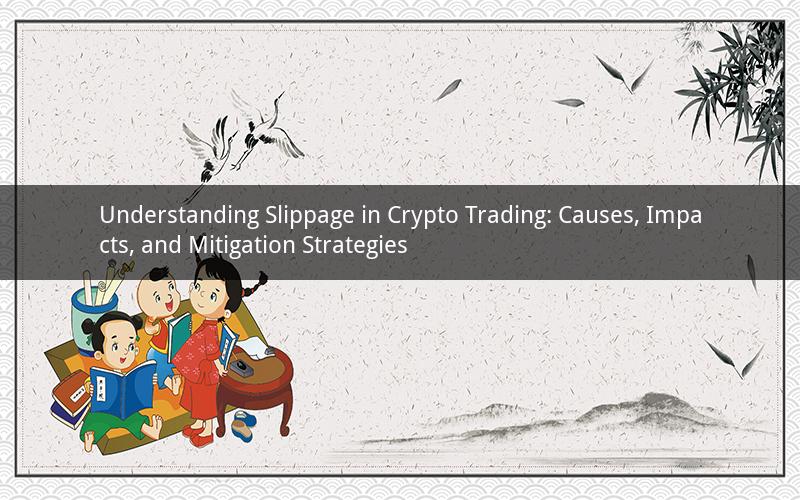
Introduction:
In the fast-paced world of cryptocurrency trading, slippage is a term that often causes concern for traders. Slippage refers to the difference between the expected price of a trade and the price at which the trade is executed. This article aims to delve into what slippage is, its causes, impacts, and provide strategies to mitigate it.
1. What is Slippage in Crypto Trading?
Slippage occurs when the price of a cryptocurrency moves significantly between the time a trade is placed and when it is executed. This price movement can cause the executed trade to be at a different price than what was initially anticipated. In simpler terms, slippage is the discrepancy between the intended price and the actual price at which the trade is executed.
2. Causes of Slippage in Crypto Trading
a. High Volatility: Cryptocurrencies are known for their high volatility, which means their prices can change rapidly. This volatility can lead to slippage as the market moves quickly, and orders may be executed at different prices.
b. Large Order Sizes: When placing a large order, there may not be enough liquidity in the market to fulfill the order at the desired price. This can result in slippage as the trade is executed at a different price.
c. Market Order: Market orders are executed immediately at the best available price, but this can lead to slippage if the market moves significantly between the time the order is placed and when it is executed.
d. Low Liquidity: Low liquidity in the market can cause slippage as there may not be enough buyers or sellers to match the trade, resulting in a higher execution price.
e. High Market Impact: Orders that have a significant impact on the market can cause slippage, as the price may move away from the intended price before the order is executed.
3. Impacts of Slippage in Crypto Trading
a. Increased Costs: Slippage can lead to increased costs for traders, as the executed price may be higher or lower than the intended price.
b. Reduced Profits: Traders who experience slippage may see reduced profits, as the discrepancy between the intended and executed price can erode their gains.
c. Emotional Impact: Slippage can cause emotional distress for traders, as it can lead to frustration and a sense of loss of control over their trades.
4. Strategies to Mitigate Slippage in Crypto Trading
a. Use Limit Orders: Instead of placing market orders, which are executed at the best available price, traders can use limit orders to specify the exact price at which they want to buy or sell. This can help minimize slippage, as the trade will only be executed at the specified price or better.
b. Place Orders in Small Batches: Traders can break down large orders into smaller, more manageable batches. This can help reduce the impact of slippage, as smaller orders are more likely to be executed at the desired price.
c. Monitor Market Conditions: Keeping an eye on market conditions and volatility can help traders anticipate potential slippage and adjust their strategies accordingly.
d. Utilize Advanced Order Types: Some exchanges offer advanced order types, such as stop-loss and take-profit orders, which can help traders manage their trades and minimize slippage.
e. Choose Exchanges with High Liquidity: High liquidity exchanges tend to have tighter spreads and lower slippage, making them a better choice for traders looking to minimize slippage.
Frequently Asked Questions:
1. What is the difference between slippage and market impact?
Slippage refers to the discrepancy between the intended and executed price of a trade, while market impact refers to the influence a large trade has on the market, causing the price to move away from the intended price.
2. Can slippage be completely eliminated in crypto trading?
While it is challenging to eliminate slippage entirely, traders can use various strategies to minimize its impact, such as using limit orders, placing orders in small batches, and monitoring market conditions.
3. How does slippage affect the overall profitability of a trade?
Slippage can reduce the profitability of a trade, as the executed price may be higher or lower than the intended price. This discrepancy can erode gains and increase costs for traders.
4. Can slippage be beneficial in certain situations?
In some cases, slippage can be beneficial, such as when a trader wants to execute a trade quickly and is willing to accept a slightly higher or lower price to get the trade done.
5. How can traders stay informed about market conditions and volatility?
Traders can stay informed about market conditions and volatility by following news, analyzing charts, and using real-time market data to make informed decisions. Additionally, utilizing trading platforms with integrated market data and tools can help traders monitor market movements and anticipate potential slippage.